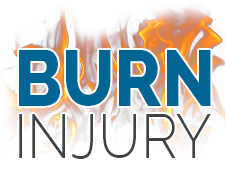Workplace Explosions
According to the Bureau of Labor Statistics’ National Consensus of Fatal Occupational Injuries, 143 workers were killed in fires and explosions in 2011. Workplace explosions are most likely to occur in work environments with hazardous substances, such as explosives, gas storage tanks, or open flames. These substances may be common in workplaces such as manufacturing facilities, construction sites, oil refineries, and mines. However, workplace explosions may occur in environments where hazardous substances are not an element in the daily process.
Workplace Explosion Injuries
Injuries from workplace explosions are typically placed into four categories: primary, secondary, tertiary, and quaternary. Generally speaking, these categories range from most severe to least severe injuries. Before treatment begins, it is important to first classify the patient’s injury and determine the extent of damage.
Primary Blast Injuries
Primary blast injuries occur in workplace explosions that inflict pressure on the victim’s bodily tissues. Primary blast injuries most commonly affect areas such as the lungs, ears, and gastrointestinal tract. These areas are susceptible to primary blast injuries due to the presence of air, which may be compressed by pressure generated during a workplace explosion.
Secondary Blast Injuries
Secondary blast injuries from workplace explosions occur when victims are struck by debris or other objects from the explosion. Secondary blast injuries may be caused by any object, such as equipment, furniture, and shrapnel. Like primary blast injuries, secondary blast injuries occur in victims in closest range to workplace explosions.
Tertiary and Quaternary Injuries
Tertiary blast injuries occur when the victim is lifted from the ground during a workplace explosion. This often causes severe injury, as the victim’s body is thrust onto the ground or into nearby objects. Quaternary blast injuries categorize the remainder of injuries from workplace explosions. These may include burns, inhalation of smoke and other toxic substances, and crush injuries.
Causes of Workplace Explosions
Workplace explosions may be caused by hazardous factors such as:
- Combustible dust, such as metal dust, biosolids, coal dust, or wood dust
- Storage tanks for flammable liquids or gases, such as gas and methane
- Hot work activities, including hot-cutting, welding, and grinding
- Equipment with combustion engines, such as generators, forklift trucks, and compressors
- Exhaust pipes, ducts, and other hot surfaces
- Static electricity that causes electrostatic discharges
- Mechanical sparks due to impacts or metal striking against rock or concrete
Employer Negligence
In some cases, preventable workplace explosions are the direct result of an employer’s negligence. This may occur when an employer fails to identify hazardous working conditions, or fails to correct known hazardous working conditions. Workers harmed due to employer negligence may be entitled to compensation by filing a lawsuit against the employer or company responsible for the workplace explosion. Those who feel they may be victims should contact an experienced workplace explosion attorney as soon as possible.
Sources:
Cutchin, Malcolm P., et al. “Concern about Petrochemical Health Risk before and after a Refinery Explosion.” Risk Analysis: An International Journal 28.3 (2008): 589-601. Business Source Complete. Web. 19 Dec. 2014.
“Factory didn’t recognise explosion risks.” The Safety & Health Practitioner Oct. 2010: 14. Academic OneFile. Web. 19 Dec. 2014.
“Failure to safely handle volatile chemical resulted in workplace explosion.” Occupational Hazards Aug. 2003: 12. Academic OneFile. Web. 19 Dec. 2014.













